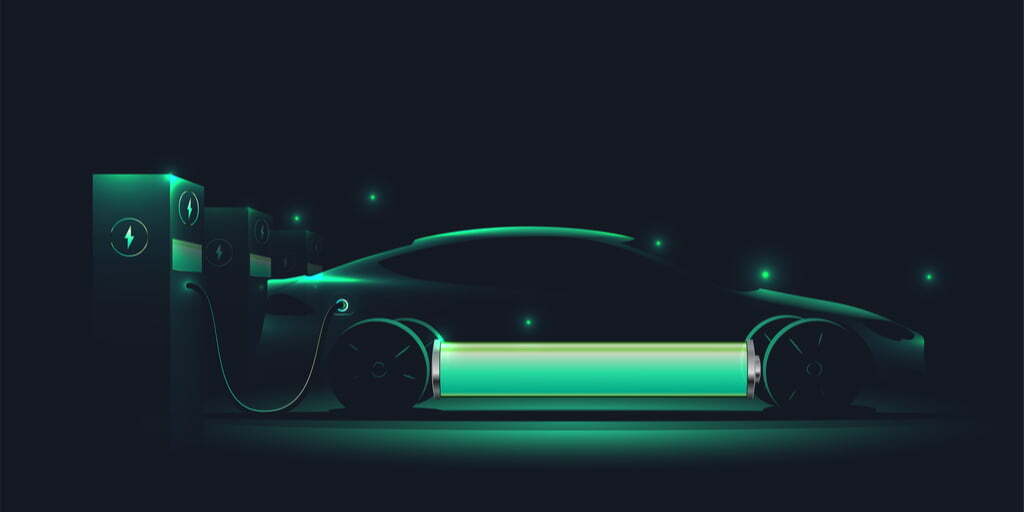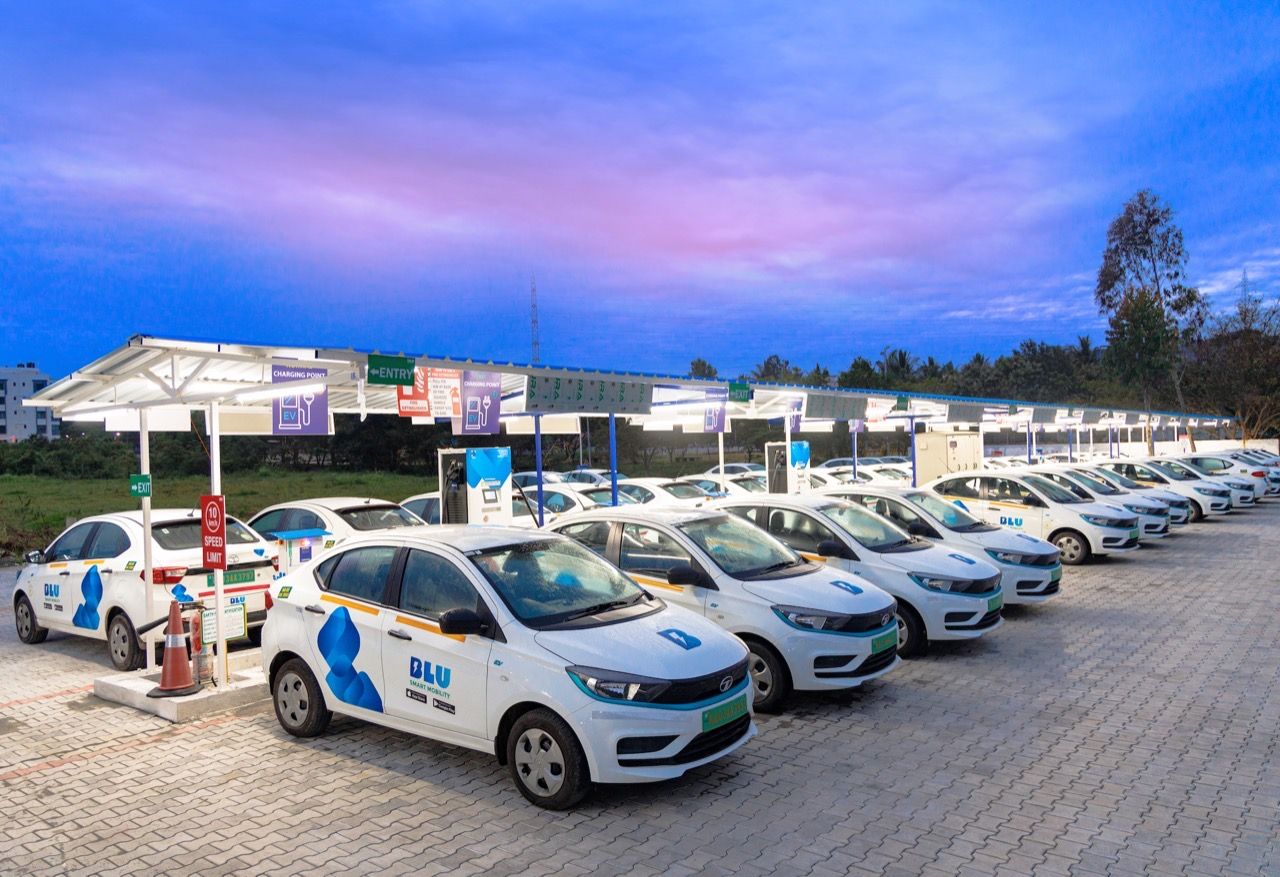
Driving into Tomorrow: The Rise of Electric Vehicles(EVs) and Sustainable Transportation
♠ Government schemes have improved e-charging infrastructure, reduced Goods and Services Tax (GST) on EV sales, and offered subsidies totaling Rs. 10,000 crores
♠ The battery industry, the waste recycling industry, the charging infrastructure industry, the electric taxi industry, and many more will all see growth as a result of EV business growth
♠ Availability of charging stations at reasonable intervals, advances in rapid charging technology, and the development of more environmentally friendly means of generating the electricity needed to charge the cars all impact adaptability of EVs in the long run
“Hybrid electric vehicles (HEVs) are more eco-friendly than BEVs”, according to new study from the esteemed Indian Institute of Technology (IIT) Kanpur (BEVs). The electric car sector, which has grown in response to growing global environmental concerns, has been thrown into disarray by this single study paper.
Life Cycle Emissions Analysis (LCA) comparisons were used to determine study findings at IIT Kanpur. Battery Electric Vehicles (BEVs) were found to emit 15-50 percent more greenhouse gases in various categories compared to other vehicles in a study published in March 2023 that compared the LCA and Total Cost of Ownership (TCO) of BEVs, HEVs, and Internal Combustion Engine Vehicles (ICEVs) options available in India.
Before we delve into the specifics of the advantages, disadvantages and feasibility of a wide net adoption of electric vehicles as a primary mode of transportation, let us take a look at the evolution of EVs across the world:
The history of Electric Vehicles In India and The World
It’s difficult to credit a single person or nation with the development of the electric automobile. Instead, it was a string of innovations in the 1800s that ultimately led to the first electric car on the road, from the battery to the electric motor. Many people believe that the debut of the Toyota Prius marked the beginning of a new era. The Prius was the first mass-produced hybrid electric car when it was introduced in Japan in 1997. When first introduced to the public in 2000, the Prius quickly gained notoriety thanks to its popularity among Hollywood elite. Toyota utilised the nickel metal hydride battery to power the Prius. Since then, the Prius has become the best-selling hybrid in the world, thanks in large part to increased fuel prices and growing concern about carbon emissions.
Since then, rising gas costs and public concern about greenhouse gas emissions have helped propel the Prius to the top of the hybrid sales charts worldwide. In addition, in 2006, a Silicon Valley startup called Tesla Motors said it would begin manufacturing a high-end electric sports car with a range of over 200 miles on a single charge. Many major manufacturers have accelerated development of their own electric vehicles in response to Tesla’s announcement and subsequent success. The Chevrolet Volt and the Nissan LEAF both hit the market in the United States in late 2010. The Volt is the first plug-in hybrid to be sold to the general public. Its electric motor is supplemented by a gasoline engine after the battery is exhausted, giving drivers the option of using electricity alone for short journeys and gasoline to cover longer distances. The LEAF, on the other hand, was an electric car, sometimes known as a battery-electric vehicle, an electric vehicle, or simply an EV.

India was seeing its own evolution of a new and apparently sustainable way of transportation. The VIKRAM SAFA, a three-wheeled electric vehicle created in 1996 by Scooter’s India Pvt Ltd, was the first of its kind. Four hundred automobiles were manufactured and sold. BHEL also released a successful kind of electric bus with seating for eighteen passengers in the year 2000. About 200 of these electric vehicles were produced and put into service in Delhi. However, it did not sell very well because of the expensive price of the battery and its short lifespan. Hero cycles’ first line of bicycles was introduced in 2007 in conjunction with ULTRA Motor of the United Kingdom. Electrotherm India, TVS Motor, Hero electric, etc., followed in the wake of their success by producing electric bikes. They also produce and market their products. As a further example of efficient and environmentally friendly transportation, in 2017 Etrio collected over $3 million from HNIs and set out to convert current fuel-powered commercial vehicles into electric variations.
The Business of EV
After the year 2015, India made serious progress in joining the electric vehicle revolution. Consumers in India were sluggish to embrace electric two-wheelers at first, but this trend has since accelerated, and now India has the largest and fastest-growing two-wheeler industry in the world. Forecasts predict that yearly car sales would reach 26.6 million units by 2025, leading to a tremendous 78 percent rise by 2030, as automobiles are the most popular and cost-effective mode of local transportation in India. The idea and potential of such a sizable market going electric is exciting.
Roughly 500,000 e-rickshaws were sold in India in 2016–17. It was a great boon to people’s everyday commutes. Two- and three-wheeled vehicles are currently at the forefront of India’s EV revolution. Due to the rising price of conventional fuels like gasoline and diesel, many businesses that specialise in last-mile deliveries are switching to EVs. As a result of the rise of the electric vehicle (EV) market, fleet aggregators are now at the helm of hundreds of freight fleets responsible for last-mile deliveries. E-buses have replaced conventional buses in several Indian states and towns. The market was dominated by electric rickshaws due to their enormous popularity.
We also saw the rise of BluSmart, a startup which owns and operates an all-electric vehicle (EV) fleet in Bangaluru and Delhi-NCR. Despite wide adoption, BluSmart’s consolidated net loss widened 66% year-on-year (YoY) to INR 65.5 Cr in the financial year 2021-22 (FY22) on the back of a sharp jump in expenses. In May, 2023, BluSmart raised $42 million in Series A2 round and hoped to turn its core-market “Delhi-NCR” profitable by August. Whether BluSmart will be able to turn a profit and build a sustainable revenue base for itself is yet to be seen.

Government Initiatives
The Indian government sees the promise of EVs and has mandated that all two-wheeler manufacturers begin making and selling only EVs by the year 2030. Electric vehicles (EVs) have received a significant boost because to the government’s establishment of the FAME 1 and FAME-II schemes, which have improved e-charging infrastructure, reduced Goods and Services Tax (GST) on EV sales, and offered subsidies totaling Rs. 10,000 crores. These plans, together with the Production Linked Incentive (PLI) plans, the scrappage policy, and the Make in India campaign, lay the groundwork for rapid expansion of the electric vehicle (EV) industry in India.

Many businesses have begun installing charging stations ahead of the government’s plans for a nationwide network. Meanwhile, several companies are shortly launching India-specific battery-cell production, and a well-known mining company in India has partnered with an MNC to invest Rs 1,54,000 crore to build up a semiconductor manufacturing plant in Gujarat.
The Way Forward
Increasing EV manufacturing alone would not make EVs more desirable or practicable as a replacement for combustible fuel vehicles or boost their rate of adoption. The functionality of these EVs depends on a wide range of factors, such as the availability of charging stations at reasonable intervals, advances in rapid charging technology, and the development of more environmentally friendly means of generating the electricity needed to charge the cars. By the end of 2022, 2,700 public charging stations and 5,500 charging connections were available in India. According to Counterpoint Research, there will likely be 10,000 public charging stations across the country by the year 2025. By 2030, the country will need as many as 20.5 million charging stations, a massive undertaking propelled by an increase in electric vehicle sales.
Assuming rapid decarbonization of India’s electricity sector, replacing the country’s fleet of vehicles with electric motors will significantly reduce emissions. However, if properly piloted and managed, the vast number of distributed energy sources that will be released as a result of electrifying road transport will help absorb surplus solar and wind generation, lower costs for consumers and utilities, and encourage the widespread adoption of electric vehicles.
To fully realise this potential, we need legislative support for charging infrastructure and incentives for grid-friendly charging, especially to encourage daytime charging to absorb plentiful solar production during the day.
The transition to EVs, whether they be BEVs or HEVs, has been a long time coming. The battery industry, the waste recycling industry, the charging infrastructure industry, the electric taxi industry, and many more will all see growth as a result of this transformation. There is a massive opportunity for established companies or new ventures to expand into any of these fields.


We have technology in that an electric vehicle run like electric train with full load carrying